#having too much fun drawing monster!nimona
Text

fanart of @mvjerbs ’s au
Just a single dad trying his best to feed his daughter
#having too much fun drawing monster!nimona#beyond the wall au#nimona#nimona movie#ballister boldheart#nimona fanart
459 notes
·
View notes
Text
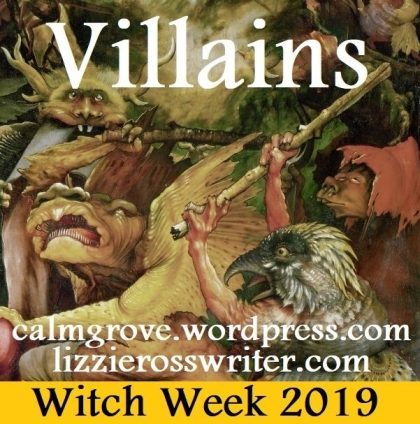
Lizzie Ross, co-convener since 2018 and last year’s co-host for Witch Week, blogs about reading and writing at LizzieRossWriter.com. In this post she rightly draws attention to villains in graphic novels, the range of which may prove surprising to those not familiar with this genre.
Yesterday, Laurie from Relevant Obscurity set the tone for Witch Week 2019 by providing us with a list of despicable qualities found in evil rulers. In this post I apply Laurie’s points to villains of all sorts in fantasy graphic novels. Some of these villains are leaders or want to be; others use/enslave/kill characters to gain power or wealth or longer life; still others just seem to get joy out of causing mayhem. But whatever their motivations, they’re all heinous enough to provide frissons of horror.
Watchmen: The Deluxe Edition, Alan Moore / Dave Gibbons, DC Comics, 1986-1987/2013
Lately, the distinctions between hero and villain in graphic novels have grown nebulous, with sympathetic villains and troubled heroes making it difficult to decide who we’re rooting for. Unlike Jadis in Narnia, whose icy demeanor hides nothing more than a cold lust for power, characters like Watchmen’s Rorschach and Monstress’s Maika Halfwolf have so many flaws their very clothes and skin seem to writhe in agony. And yet, neither is a villain. Nimona kills her enemies with barely an afterthought, finding it more expedient to wipe them out than to negotiate or try to go around them. And yet, we can’t help rooting for her, and she is most definitely not the villain of the story.

Beowulf, Santiago García / David Rubín, Image Comics, 2018
Of course there are still many traditional – that is, unredeemable – graphic novel villains. Grendel in García’s and Rubín’s Beowulf, based on the 1000-year-old Old English poem, is as relentlessly blood-thirsty as a reader could wish and, when finally revealed in a snowy two-page spread, seems to glow with internal fires of hatred. And those teeth!
The Shadow Hero, Gene Luen Yang & Sonny Liew, First Second Books, 2014
Ten Grand and his gweilo cronies, in Gene Luen Yang’s and Sonny Liew’s The Shadow Hero, are traditional noir villains, greedy and ruthless, preying on Chinese immigrants to enrich themselves via bribes and protection money, never hesitating to kill uncooperative “clients”. Then out of the tenements comes the Green Turtle, a reluctant hero who avenges his father’s death and then returns to his quiet life as Hank Chu, shopkeeper. The Green Turtle made his first appearance in the 1940s, joining other Marvel heroes to fight Axis spies, and in their 2014 prequel, Yang and Liew propose an origin story for this superhero – a “tiger mom” and an ancient spirit provide the push, and the superpower, that turn Hank into the Green Turtle.
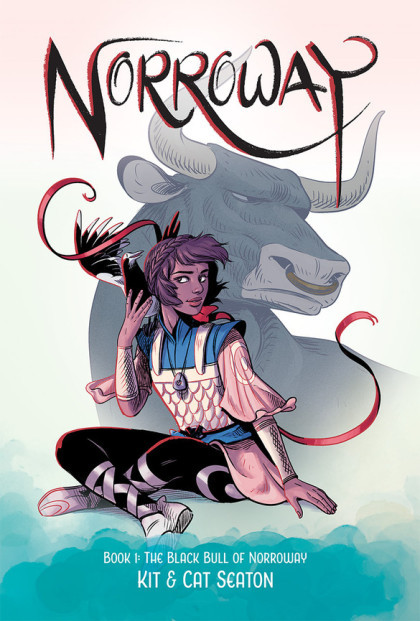
Norroway: Book 1 The Black Bull of Norroway, Kit & Cat Seaton, Image Comics, 2018
Drawing on traditional tales such as Beowulf and well-known fairy stories often results in archetypal heroes and villains. But not always. Sisters Kit and Cat Seaton collaborate as author and illustrator of Norroway: The Black Bull of Norroway, a graphic version of a Scottish fairy tale. The Seatons give us the heroine Sibylla, a stubborn and angry teen fated to marry a bull. At first, we suspect the bull itself – huge and stubborn and easily riled – might be the villain, except that we soon recognize that Sibylla will eventually fall in love with her bull. But before that can happen, she loses him. That’s how Book 1 of this proposed trilogy ends – the subsequent volumes will follow Sibylla on her search and, no doubt, let us know what Brom the Bull is doing in the meantime.
So who, then, is the villain in the Seatons’ tale? Is it Brom’s father, who used his children to lengthen his own life? Is it the Old One who caused Brom’s taurine metamorphosis? Or could it be Sibylla herself, who, as a typical teen, resents every burden placed on her and throws periodic destructive tantrums? Only the first volume of this series has been published, so I have no answers yet. Cat Seaton’s dark and muted palette for her illustrations sets a somber tone, making me wonder if the expected happy ending might not arrive after all. We’ll see.
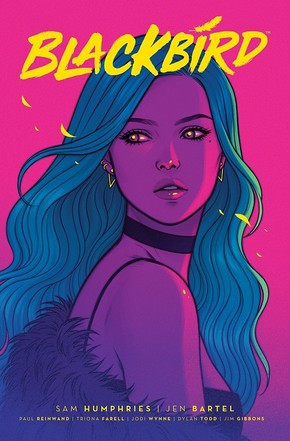
Blackbird: Book 1 The Great Beast, Sam Humphries / Jen Bartel, Image Comics, 2019
Sam Humphries and Jen Bartel in Blackbird give us another angry teen story, set in a modern LA troubled with territorial violence. Cabals of Paragons (magical zombies who look really good for dead people) fight each other for power and new recruits. Nina Rodriguez, the pill-addicted heroine, gets caught up in the battles when her sister is kidnapped by a giant tiger-like beast. Nina’s mother is dead, her alcoholic father AWOL – so Nina’s on her own to rescue her sister. Who can she trust? The handsome flashy guy from the Zon Cabal, or the gorgeous punk blonde from Iridium? As with other villains discussed so far, the evil-doers here seem to be motivated by lust for power. But there’s much still to be revealed as Nina’s tale unfolds, with surprise appearances and the usual plot twists.
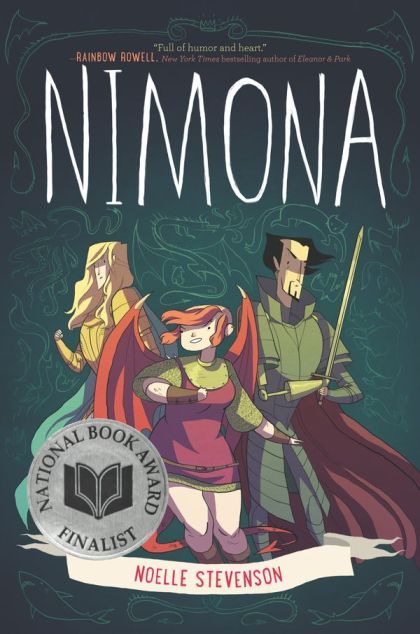
Nimona, Noelle Stevenson, Harper Collins/Harper Teen, 2015
Noelle Stevenson’s Nimona began life as a web comic. Dedicating her book “To all the monster girls”, Stevenson turns heroic and villainous archetypes on their heads. The eponymous protagonist, a chubby girl with a punk haircut, talks her dark idol, the evil Lord Ballister Blackheart, into letting her be his sidekick. “Every villain needs a sidekick.” An orphan with shape-shifting powers, Nimona wants to kill all Blackheart’s enemies, who include Sir Ambrosius Goldenloin (Stevenson isn’t coy with her characters’ names), and manages to kill several of them and destroy a lab on her second day of work – to the dismay of Lord Blackheart, who doesn’t believe it’s necessary to kill anyone just to defeat his enemy. Nimona reluctantly falls in line, but we know there’s more mayhem in her future.
Yes, this is a comedy, and yes, from the start there’s no doubt who the real bad guys are. But Nimona’s actions remind us of a few questions for which there are probably no answers: Can you be a hero if you kill people without regret? Is collateral damage ever justifiable? Is it okay to do the right thing for the wrong reasons? Nimona sets the tone within the first few pages: “We’re villains!” she says to Blackheart. “Villains kill people sometimes!” Later, when he protests her love of violence, she points out, “No one’s ever going to take you seriously if you’re too afraid to kill anyone.” She takes “villainy” seriously, and we can only laugh as we see her unintentionally allied with the good guys. She seems always to be doing the right thing for the wrong reason, even if she’s overly bloody in the process.
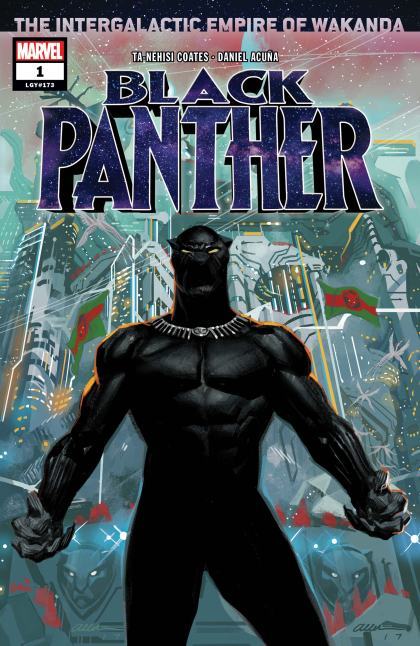
Black Panther: A Nation Under Our Feet, Ta-Nehisi Coates and Brian Stelfreeze, Marvel Comics, 2016
As with Nimona, moral ambiguity underlies Black Panther, Watchmen, The Sandman, and Monstress, but all four are serious graphic novels, about who should hold power over the rest of us, and whether anything justifies such power. In Monstrous and The Sandman, that power guarantees longer life; in Black Panther, it leads to increased wealth. And in Watchmen, that power allows one man to create his version of Utopia. He wants a better world, but he doesn’t care who dies to get us there. In all of these, the heroes and heroines are constantly faced with choices – what does each fight demand of them? What are they willing to give up, or compromise, in order to win? Only Black Panther, the rightful ruler of Wakanda, escapes with the least compromised principles, but early on his father tells him, “You’re a good man, with a good heart, and it’s hard for a good man to be king.” It’s a warning to us all.
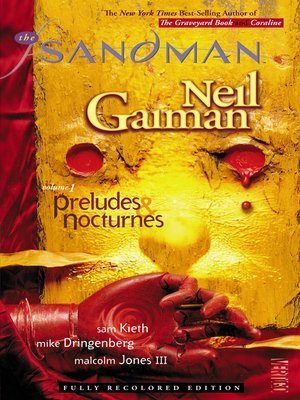
The Sandman, Neil Gaiman /Sam Kieth / Mike Dringenberg / Malcolm Jones III VertigoComics, 1988-89/2010
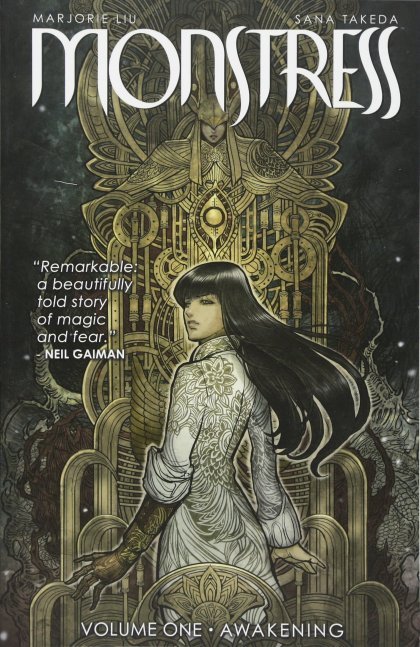
Monstress, Marjorie Liu / Sana Takeda Image Comics, 2016-2018
To round out this list to an even 10, I close with Shaun Tan’s lovely and enheartening The Arrival, a wordless picture book about the wrench of leaving home for a new life elsewhere. There are no villains in this book, unless you want to count the challenges of being a poor immigrant in a new country whose language you don’t know and whose wife and child are still in the old country. But the story is glorious, with otherworldly sepia-toned artwork. Monstrous tentacles twine around the stone buildings and through the streets and skies of a town in the old country. The new country is like something out of Hieronymus Bosch, full of steaming smokestacks, pyramidal skyscrapers, giant beasts (harmless, mostly), and teeming streets. Terrifying because it’s all so strange. Each page needs several minutes to examine. Perhaps most revealing of Tan’s intent here are the endpapers – 60 passport-like “photos” of people of all ethnicities. These, Tan seems to be saying, are the citizens of the new world; get used to it.

The Arrival, Shaun Tan, Arthur A. Levine Books, 2006
I’ve had fantastic fun re-reading old favorites and discovering new graphic authors and artists for this year’s Witch Week. Have I inspired you to pick up one or two of these books, or at least to tell me about your own favorite graphic novel villains? Let me know. And HAPPY WITCH WEEK!
This slideshow requires JavaScript.
Lizzie Ross
Hopefully Lizzie has persuaded you that graphic novels have a wider range of villains than conventional wisdom claims for the comics genre!
#WitchWeek2019 Day 2: Graphic Villainy Lizzie Ross, co-convener since 2018 and last year's co-host for Witch Week, blogs about reading and writing at…
0 notes